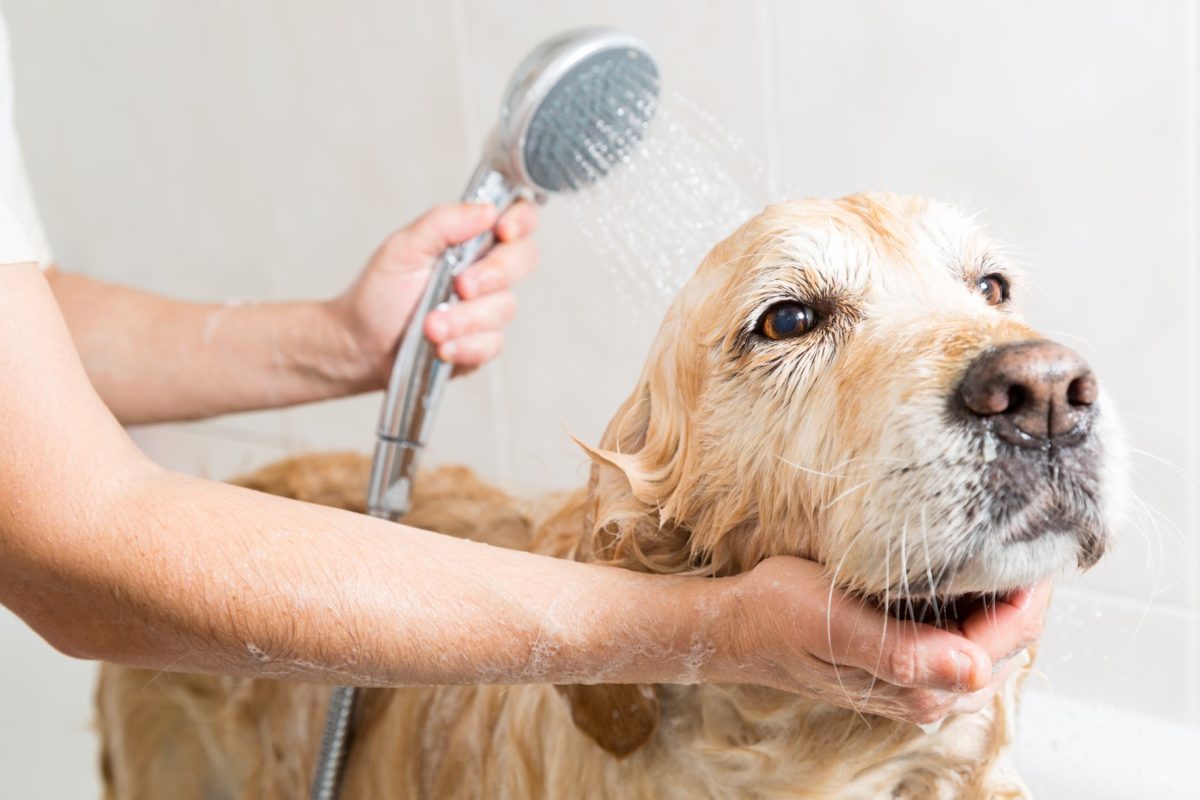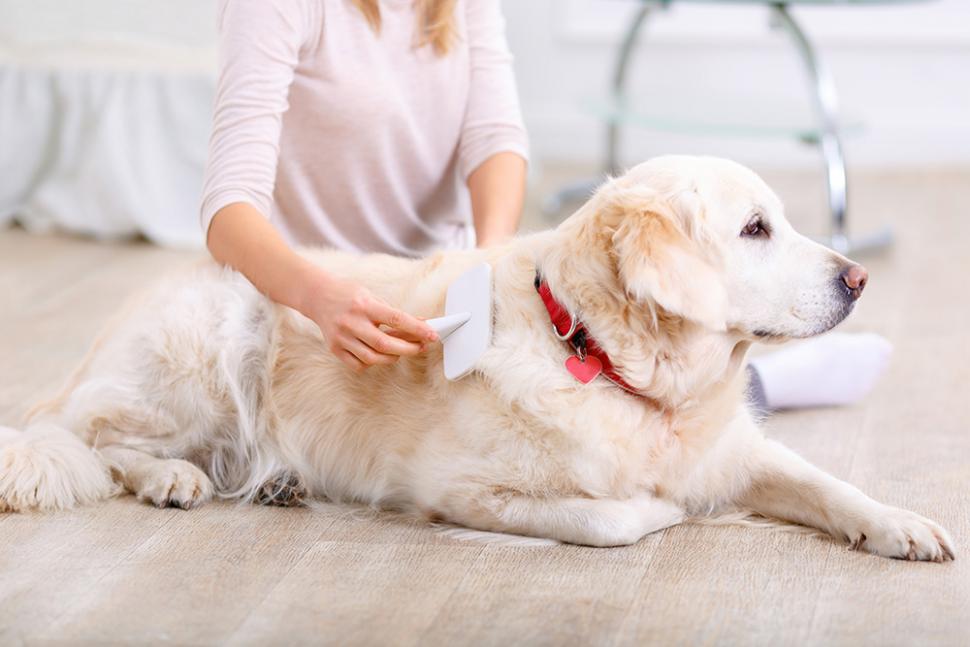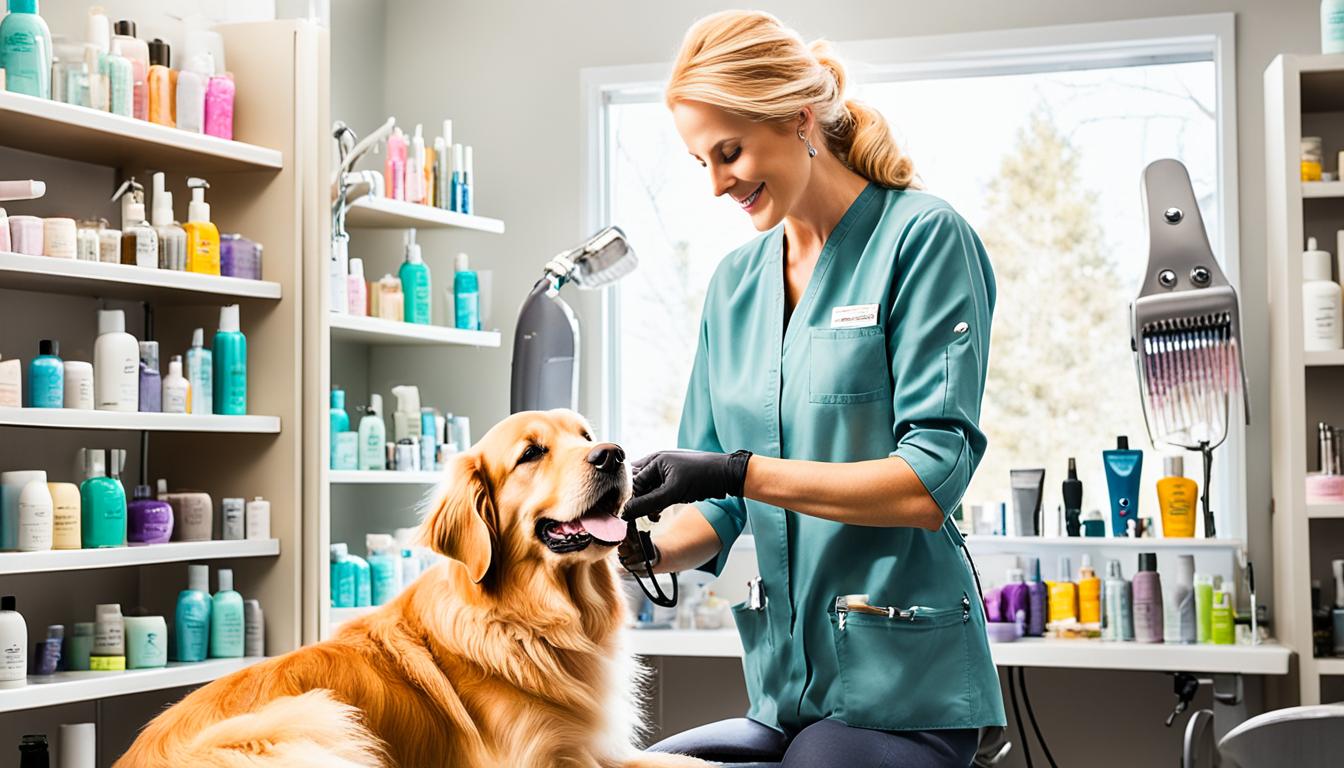
Nail Trimming 101: How to Safely Trim Your Dog’s Nails
Is the fear of hurting your furry friend stopping you from learning dog nail care at home? With the right canine nail-trimming techniques, you can keep your dog’s paws healthy. This way, you avoid the stress and cost of frequent groomer visits. But, did you know that regular nail maintenance is crucial for your dog’s well-being?
How to trim dog nails is a skill every pet owner should learn. A good rule is to trim your dog’s nails once a month. However, your dog’s lifestyle affects the right schedule. Active dogs may not need nail trims as often, while indoor dogs might need them more frequently.
Ignoring dog nail care can lead to discomfort or even chronic pain. Long nails can affect your dog’s gait and cause arthritis over time. This means every step could be painful for your dog. Plus, the quick—a vein in each nail—can extend if nails are not trimmed regularly. This increases the risk of painful accidents during clipping.
It might surprise you that almost half of all dogs have dark nails, making it hard to see the quick. But an accident with the quick is worse than you think. If nails are not trimmed, they can curl into the paw pads. This can lead to infection and irreversible damage over time.
Learning how to trim dog nails safely and efficiently is key to preventing foot problems. Yet, about 60% of dogs still get anxious during nail trims. More than 70% of dogs need regular trims to avoid pain and injury. Using a nail grinder can help about 40% of dogs feel more comfortable. With the right approach, even sensitive paws can learn to trust the process.
If you’re a seasoned pet owner or a concerned newbie, a careful approach to trimming and care is crucial. Remember, over 90% of cases suggest keeping styptic powder on hand for emergencies. If you’re unsure, always consult a veterinarian or vet tech before trimming your dog’s nails at home.
Step into the world of dog nail care with confidence, knowing the risks and rewards. A well-done trim is more than just a beauty session; it’s a key part of your dog’s health and happiness.
Understanding the Importance of Regular Dog Nail Trimming
Keeping your dog’s nails trimmed is key to their health and comfort. Long nails can cause pain and lead to serious problems. They can bend the toes, make walking hard, or even cause infections or arthritis.
Long nails hit the ground when your dog walks, putting pressure on their feet and legs. This can mess up their walking and posture. Plus, they might get caught on carpets, causing pain or even losing a nail. Safe nail trimming for dogs keeps their paws and tendons in good shape, making them more comfortable.
Experts say dogs should have their nails trimmed every 4-6 weeks. This keeps the nails from touching the ground and stops the quick from getting too long. The quick is the sensitive part inside the nail.
For dark-nailed breeds like Rottweilers, trimming is tricky because you can’t see the quick. Trim about 2 mm away to avoid hurting your dog. This is why they need careful and frequent trims to stay healthy.
Some dogs, like Doberman Pinschers, have very short nails. Trimming them right is crucial for their comfort and health. Don’t forget about the dewclaw, which might need extra care in some breeds.
Safe nail trimming for dogs is about more than just how often or with what tools you use. It’s about knowing what each breed and dog needs. Talking to a groomer or vet can help you find the best care for your dog, avoiding nail-related problems.
Preparing for the Nail Trimming Process
Getting ready for safe nail trimming for dogs starts before you even pick up the clippers. It’s about making your dog feel calm and comfortable with the tools and setting. Knowing about your pet’s diet and health can also make nail trimming easier.
Start by letting your dog get used to the nail trimmers or grinders. Let them sniff, see, and hear these tools at their own speed. Reward them with treats and praise to make the experience positive. This helps reduce stress because getting used to it early makes it less scary.
Have everything you need ready before you start trimming. This means clippers or grinders, styptic powder for emergencies, treats, and maybe an extra person to help calm your dog. Since 40% of dog owners find it hard to keep their dogs still, having help is key.
Start introducing your dog to nail trimming early, especially with puppies. Puppies that get used to grooming early tend to handle it better as they get older. This early step helps create a routine your dog can trust, making nail trimming less scary.

Being patient is crucial for safe nail trimming for dogs. Some dogs don’t like their paws touched, and 70% show fear or hesitation. Slowly getting them used to paw handling can help them feel less anxious during trimming.
Dog nail trimming tips suggest making these sessions part of your dog’s health routine. Regular trims prevent pain or injury from long nails. With patience and a positive approach, you can make grooming sessions stress-free for both of you.
Step-by-Step Guide to Safely Trim Dog’s Nails
Learning how to safely trim a dog’s nails is key for your pet’s health and movement. It might look hard, but with the right canine nail-trimming techniques, you can do it at home. Here’s a step-by-step guide to help you.
First, make sure your dog is calm. Most dogs don’t like getting their nails trimmed, so pick a good time. You might need a few tries to get your dog used to having their paws touched. Start by gently touching their paws during calm times, then move to holding and pressing them.
Pick the right tool for your dog’s size and nail thickness. For most dogs, scissors-type clippers work well. But for small breeds, a guillotine style might be better. For thicker nails, use clippers made for large breeds. Always have styptic powder ready for any cuts to the quick.
Focus on one nail at a time and clear away any fur that hides your view. Hold your dog’s paw firmly but gently, and press on the pad to stretch the nail out. Look for the quick—the pinkish area inside the nail—and cut 2-3 millimeters before it to avoid bleeding.

Cut the nail at a 45-degree angle, making sure it’s even with the ground. This keeps the nail’s natural shape and avoids toe joint pressure. If the nails are dark, use the chalky white ring as your guide. After cutting, smooth out any rough edges with a nail file or grinder, especially for fearful dogs.
Don’t forget to trim the dewclaws if your dog has them. These nails don’t wear down and can grow into the foot if not trimmed. After trimming, press on the nail to check for bleeding. If it bleeds, use styptic powder to stop it.
Finish with lots of praise and a treat to make nail trimming positive. If your dog is still anxious or you’re not comfortable doing it, see a professional groomer or vet. Trimming nails every month, based on your dog’s growth and lifestyle, is important to prevent health issues.
Using these safe methods and canine nail trimming techniques in your pet care routine keeps your dog happy, healthy, and active. With patience and practice, nail trimming can be a special time with your dog, helping their overall health.
Avoiding the Quick: Key Strategies for a Pain-Free Trim
One of the most critical aspects of safe nail trimming for dogs is avoiding the quick. The quick is the part of the nail with lots of blood vessels. Cutting into it can cause a lot of pain and bleeding. It’s important to learn how to avoid it to keep your dog comfortable and maintain dog nail health.
Dog nails that are light-colored show the quick as a pink area. This makes it easier to know where to stop cutting. But for dogs with dark nails, you have to be more careful. Safe nail trimming for dogs with dark nails means making small cuts and looking for a tiny black dot in the center of the nail. This dot tells you you’re getting close to the quick.
Experts suggest using precise clippers like the Safari Professional or Li’l Pals for trimming. These clippers help you avoid the quick and cut the nails safely. Trimming your dog’s nails often can also help the quick move back, making it easier to keep their nails short safely.

Using a nail grinder, like the Dremel’s 7300-PT, is another good idea. Grinders let you shorten the nails slowly and carefully. This gives you more control and lowers the risk of cutting the quick. Starting to trim your dog’s nails when they are young can also make them more comfortable with it.
What really matters is how you approach trimming. Nanan suggests being careful and patient. Don’t rush, and watch your dog for signs of stress. If you do accidentally cut the quick, products like Miracle Care Kwik Stop can help stop the bleeding and ease the pain.
Understanding how sensitive your dog’s paws are and being kind and informed will help you trim their nails safely. This approach ensures a pain-free experience for your dog and keeps their nails healthy.
What To Do If You Accidentally Cut the Quick
When taking care of your dog’s nails, cutting them is easy. This can lead to bleeding and discomfort for your pet. If this happens, act fast to lessen your dog’s stress and pain. Stay calm; your calmness can help lower your dog’s anxiety.
Apply styptic powder to the cut nail right away. This product, recommended by experts like Dr. Julie Buzby, stops bleeding and eases pain with Benzocaine. If you don’t have styptic powder, you can use cornstarch mixed with baking soda or plain flour. Put your chosen powder on the nail and press hard for a few minutes to stop the bleeding.
Trimming your dog’s nails without hitting the quick requires care and the right tools. Use the right clippers and make trimming a regular habit. Dr. Buzby stresses the need to get your dog used to paw handling at other times to lessen stress during nail cuts.
If the bleeding doesn’t stop after 10 minutes with styptic powder or home remedies, see a vet. Knowing how to handle these situations is key for good dog nail care.
Regular care helps avoid overgrown nails and injuries. It also boosts your dog’s health, making nail trimming less stressful in the future.
The Role of Nail Grinders in Canine Nail Maintenance
Nail grinders are getting more popular in canine nail-trimming techniques. They give a smooth edge to the nails, lowering the risk of snagging or splitting. This can be less painful for dogs. For those struggling with dog nail trimming tips, a nail grinder could be a big help.
Nail grinders are not just safe; they’re also great for nervous dogs. Grinding is slower and more controlled than clipping, making it safer. They’re especially useful for dogs with thick or dark nails where the quick is hard to see.
To use a nail grinder right, hold it firmly and make short, gentle strokes. Keep the tool high up for better control and make sure the dog’s hair is away from the grinder. Aim to round off the nail bit by bit, not cut too much at once.
Watch how your dog feels about the process and adjust as needed. Use treats and praise to make them feel good about it. This makes canine nail trimming easier and strengthens your bond.
Nail grinders are a top choice for canine nail-trimming techniques. They might take some getting used to, but they offer safety, control, and comfort. Adding them to your dog grooming tools can make nail care easier and safer.
Beyond Clipping: Building Positive Nail Trimming Experiences
Creating a welcoming atmosphere for dog nail care is key for both the dog’s well-being and the owner’s comfort. Dog Haven emphasizes the need for a gentle and patient approach when introducing nail-trimming routines. Using treats or playtime during sessions helps create a positive link. Regular trimming, even just one nail a day, can make the process less stressful for pets.
Many dog nail trimming tips focus on overcoming fear and suggest ways to do so. Vets often use Acepromazine to calm anxious pets during nail clipping. However, Greyhounds may react differently to this medication. Nail grinders are another option, offering more control and smoother results. They can be easier for some dogs to tolerate than clippers.
Patience is crucial in dog nail care. Not every session will go smoothly, and some dogs may need more time to adjust. Using various tools like lick mats, scratchboards, and Dr. Buzby’s nail trim technique can help. Regular home nail care can also save money over a dog’s life, making it a worthwhile investment.





